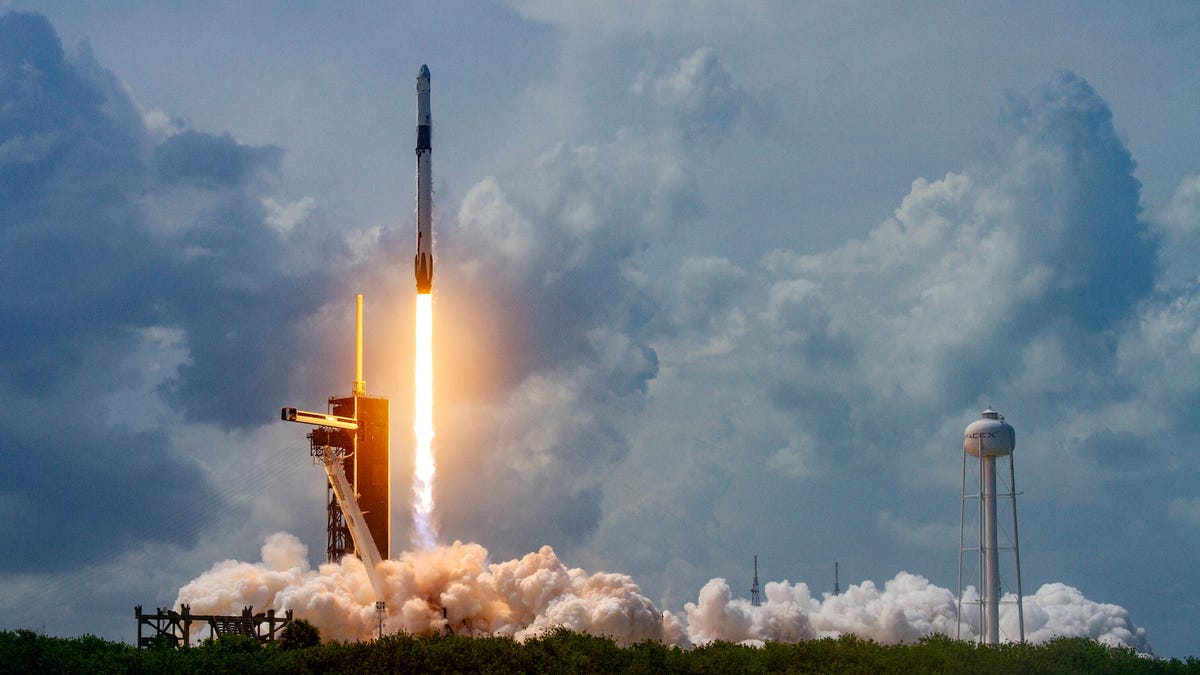SpaceX Falcon 9 launch sets record, both fairing halves caught for first time
South Korea's Anasis-II military satellite launched atop a Falcon 9.

The Falcon 9 booster for the Anasis-II mission is a history-making rocket. It was the booster used to deliver NASA astronauts to the ISS in May.
A SpaceX Falcon 9 launched from Cape Canaveral Air Force Station in Florida on Monday carrying Anasis-II, a South Korean military satellite. Launches of the workhorse rocket booster are becoming fairly routine but this one was notable for two reasons: it was the fastest turnaround time for rocket reuse and both fairing halves were captured for the first time.
You can watch a replay of the broadcast below:
The Anasis-II launch was SpaceX's 12th launch this year, the 90th flight of a Falcon 9 and the second overall for this particular booster. The booster was first flown in May to deliver NASA astronauts Doug Hurley and Bob Behnken to the International Space Station -- the first time a commercial company has done so. Ergo, it's got some history.
It also means SpaceX broke its own record for rocket reusability. This is the fastest turnaround between missions for a Falcon 9 rocket booster, with the Anasis-II booster having flown only 51 days ago.
In addition, SpaceX had long sought to capture both fairing halves -- the pieces that make up the Falcon 9 nosecone -- before they land in the ocean. Two ships, Ms. Tree and Ms. Chief, stationed in the Atlantic and adorned with huge nets, have attempted catches with varying degrees of success. But the Anasis-II mission marks the first time both fairing halves were caught.
Elon Musk, SpaceX CEO, tweeted out the news Monday.
Both fairing halves caught from space by @SpaceX ships!
— Elon Musk (@elonmusk) July 20, 2020
The payload, Anasis-II, is South Korea's first military communications satellite. Because of its use in the military, there's not a lot of information about it, except that it's based off the Eurostar E3000 satellite bus, according to the Everyday Astronaut.



